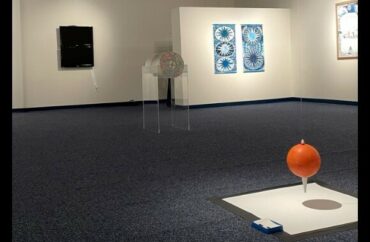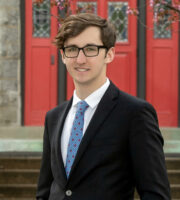
Federal NASA grant provides funding for exhibition at Central Connecticut State University
Central Connecticut State University recently hosted a “climate change” art display, funded by a federal grant, that included a musical “lament” for melting ice in the Arctic.
The exhibition, “Emerging Dialogues in the Midnight Sun,” ran from March 10 to April 11 at the university’s Chen Art Gallery and was funded by a grant from the NASA Connecticut Space Grant Consortium.
The art exhibit was part of the university’s 18th Annual Sustainability Symposium: “Climate Change Through the Lens of Art,” which took place earlier this month.
“This grant will be used for shipping artworks and purchasing materials for the purpose of educating students and the public through an exhibition of Art, Science and Music that is focused on Climate Change,” the grant description states.
The funding comes through NASA’s Earth Science Mission Directorate, which “engages the Nation’s science community, sponsors scientific research, and develops and deploys satellites and probes in collaboration with NASA’s partners,” according to its website.
One of the 22 artists featured in the exhibition was composer Frank Horvat, who created a choral work titled “I Am Ice.”
Horvat describes the piece as “a passionate lament for the state of our world” on his website. He says he composed it after visiting the Arctic and witnessing “a lot of melting ice.”
“My intention is for this piece to become a resonant voice for something typically silent—the ice itself, which has so much to tell us,” the description continues.
The College Fix reached out to Horvat by email, asking why he believes climate change-centric artwork is important.
“I channel my creativity and musical voice to share my hopes, dreams, and fears about the world I live in. Climate change, a global issue that affects every person on this planet, has always felt like a natural theme to explore in my work,” Horvat said.
“My deepest hope is that my music will spark curiosity and inspire others to take action about the pressing issues I address,” he said.
The symposium on April 3 also included discussions with several of the artists about “how their interpretations of climate change in the Arctic have surfaced as artworks.”
Composer Sunny Knable performed the piece, “Sound the Alarm,” a “five-minute pre-recorded work representing 50 years of climate change data from 1975 to 2025,” according to the symposium’s agenda.
“The notes and rhythms heard correspond to warming temperatures, carbon emissions, and melting ice caps,” the description reads.
“While scientists have been metaphorically sounding the alarm for decades, this composition is the sonification of that data into the literal sound of an alarm,” according to the description.
The Fix sent multiple emails to the university’s media relations office in recent weeks, asking about the significance of the art exhibition and potential concerns about the grant being cancelled due to President Donald Trump’s Department of Government Efficiency efforts, but it did not respond.
The Fix also reached out to NASA’s media relations department via email multiple times to ask about the status of the grant, but did not receive a response.
In March, the DOGE announced that it had cut approximately $420 million in “unneeded” NASA grants. One terminated grant for $250,000 to the Massachusetts Institute of Technology funded an earth science project focused on “Equity and Environmental Justice Support for Science Mission.”
Some scholars have raised concerns about NASA funding ideologically progressive projects through grants in recent years.
In October, NASA announced that it would be awarding $7.2 million to six “minority-serving” universities to expand diversity, equity, and inclusion initiatives in science, technology, engineering, and math fields, The Fix reported at the time.
The goal of the project was to “improve the recruitment and retention of students in aerospace-related STEM disciplines, increase their sense of belonging and broaden their participation through hands-on research and experiential learning opportunities.”
NASA also participates in the Artemis Program, which aims to “land the first woman and the first person of color” on the moon and is meant to be a stepping stone to landing on Mars.
MORE: Muslim group wants Biden ‘war criminals’ canceled from academic gigs
IMAGE CAPTION AND CREDIT: A ‘climate change’ art exhibit, funded by a NASA grant, is on display at the Central Connecticut State University. CCSU Chen Art Gallery/Instagram
Like The College Fix on Facebook / Follow us on Twitter






Please join the conversation about our stories on Facebook, Twitter, Instagram, Reddit, MeWe, Rumble, Gab, Minds and Gettr.